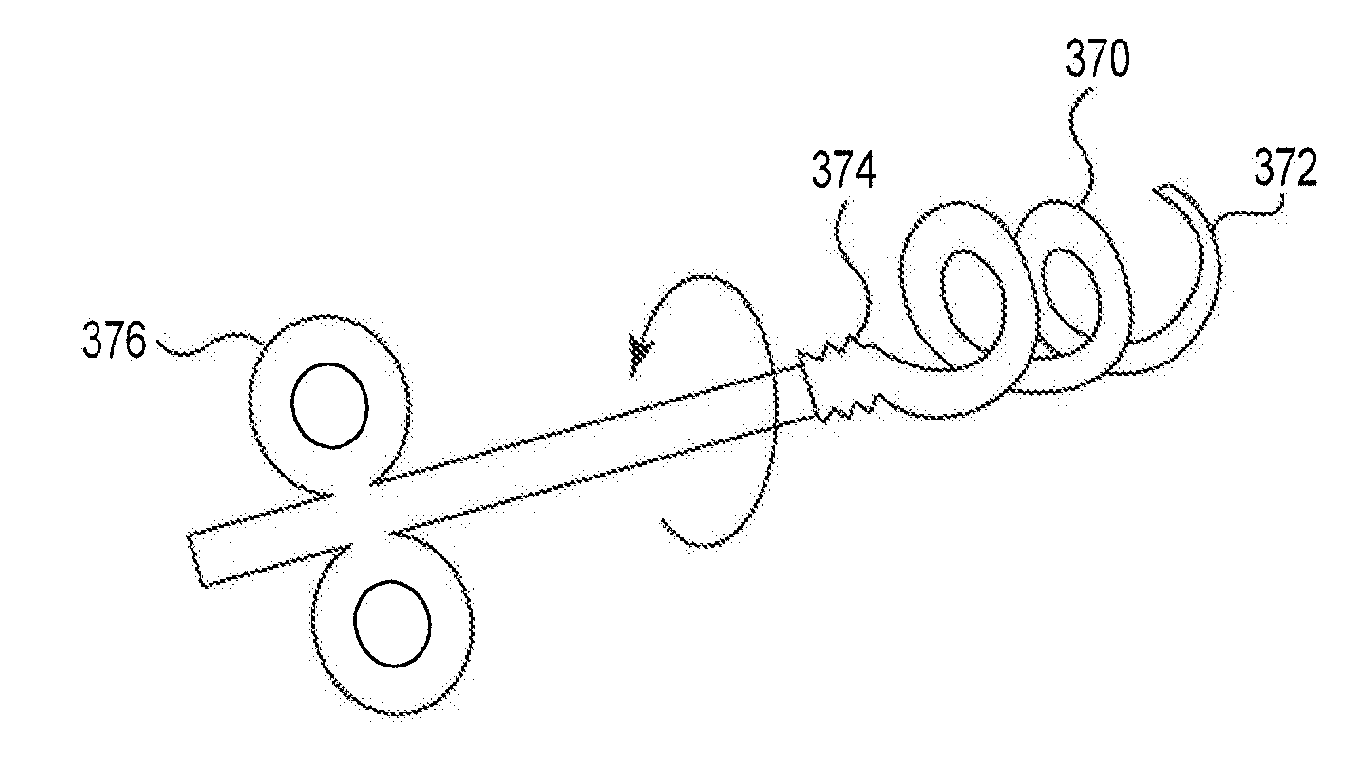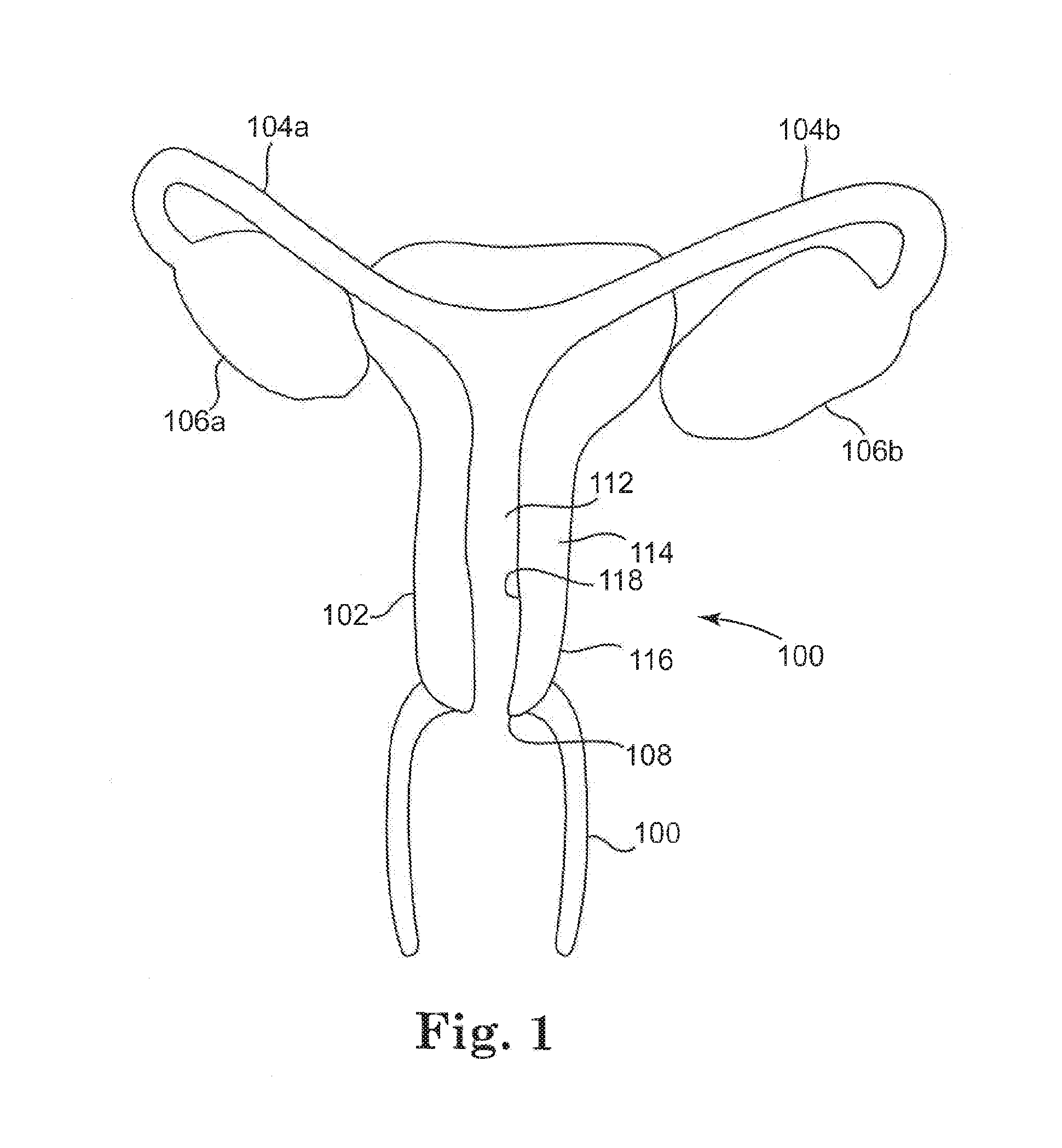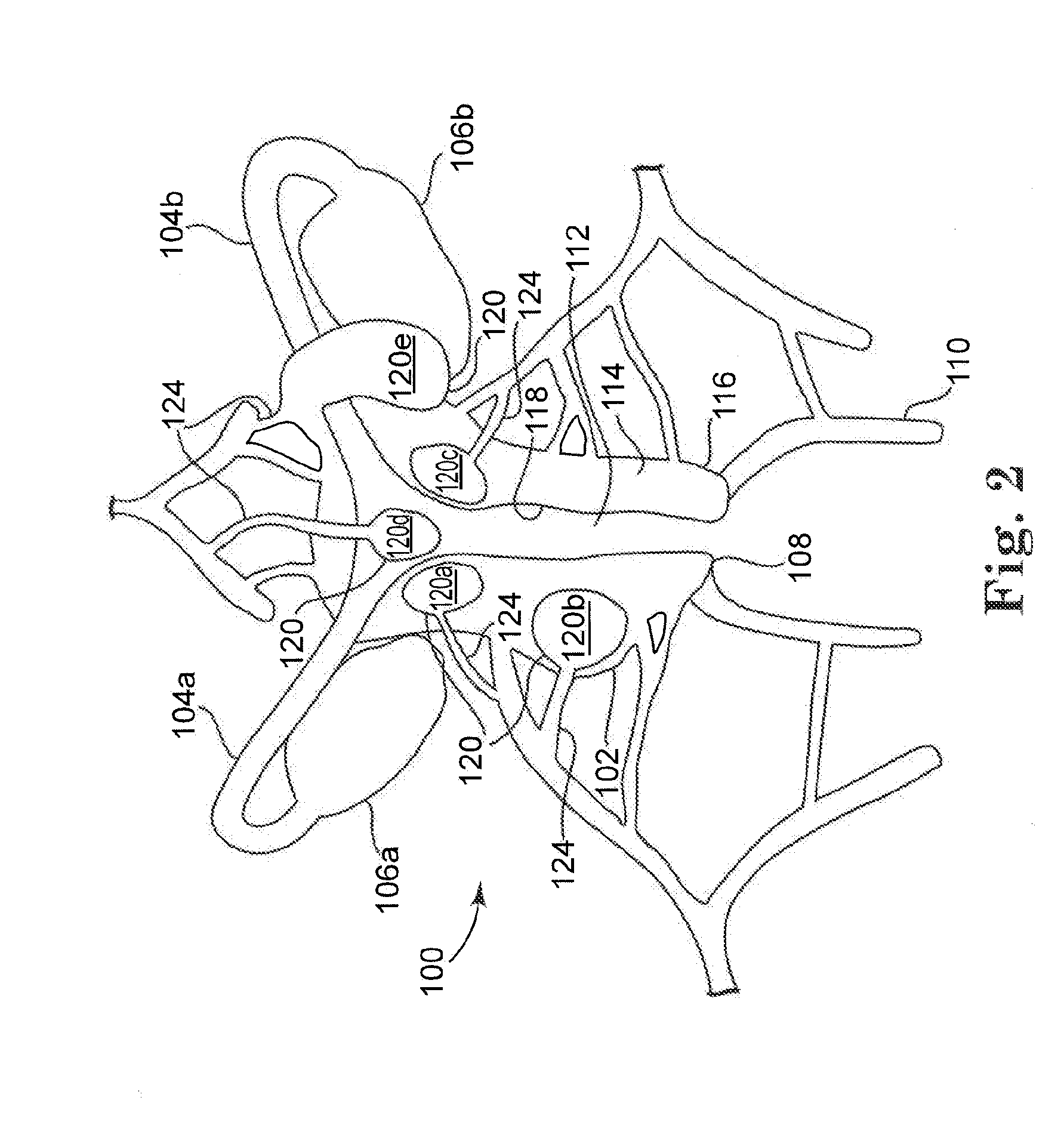Apparatus and methods of treatment of pathologic proliferative conditions uterine tissue
a technology of uterine tissue and appendix, which is applied in the field of appendix and methods of treatment of pathologic proliferative conditions uterine tissue, can solve the problems of increased costs due to extended and further hospital care, pain and even infertility, and excessive uterine bleeding, so as to minimize common side effects and inhibit the formation
- Summary
- Abstract
- Description
- Claims
- Application Information
AI Technical Summary
Benefits of technology
Problems solved by technology
Method used
Image
Examples
Embodiment Construction
[0096]The present disclosure is directed to a device for the treatment of pelvic proliferative conditions. As described throughout the following detailed description, the device can provide for treatment of female pelvic proliferative conditions including, for example, uterine fibroids, abnormal uterine bleeding, pelvic adhesions, endometriosis and the like. It is to be understood that various described embodiments will find similar application with male pelvic proliferative conditions including, for example, proliferative cells located within prostate or testes tissue.
[0097]As illustrated generally in FIG. 1, a female reproductive tract 100 generally comprises uterus 102, fallopian tubes 104a, 104b, ovaries 106a, 106b, cervix 108 and vagina 110. The uterus 102 defines a uterine cavity 112 connecting the vagina 110 with fallopian tubes 104a, 104b, thus allowing for the passage and fertilization of female reproductive cells. The uterus 102
[0098]is generally defined by a uterine wall ...
PUM
 Login to View More
Login to View More Abstract
Description
Claims
Application Information
 Login to View More
Login to View More - R&D
- Intellectual Property
- Life Sciences
- Materials
- Tech Scout
- Unparalleled Data Quality
- Higher Quality Content
- 60% Fewer Hallucinations
Browse by: Latest US Patents, China's latest patents, Technical Efficacy Thesaurus, Application Domain, Technology Topic, Popular Technical Reports.
© 2025 PatSnap. All rights reserved.Legal|Privacy policy|Modern Slavery Act Transparency Statement|Sitemap|About US| Contact US: help@patsnap.com



